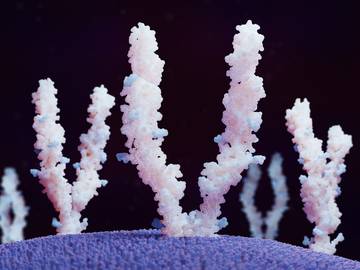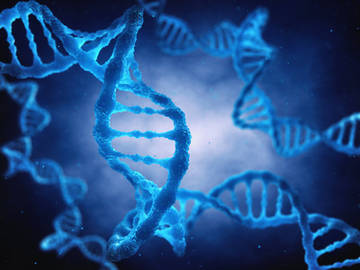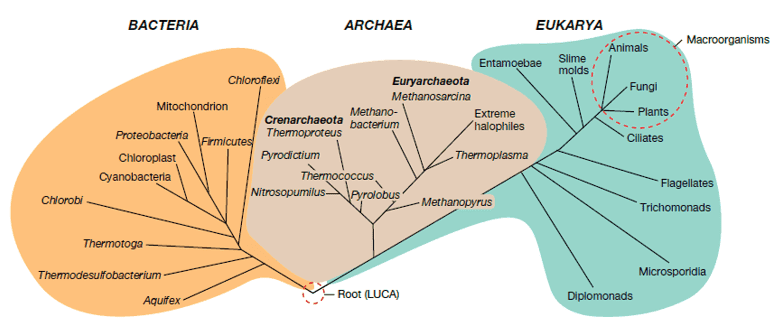Microorganisms, particularly bacteria, are grouped based on various characteristics such as physical morphology, cultivation characteristics, energy and nutrient requirements, biosynthetic capacities, optimal growth temperature, and oxygen demand, among others. One classification utilized in bacterial separation is oxygen demand. This benchmark bifurcates bacteria into two primary categories: Aerobic bacteria or those species typically requiring oxygen for growth, and anaerobic bacteria- species that do not necessitate the presence of oxygen for growth.
Oxygen (O2), a critical molecule for the metabolism, growth and survival of many microbial species, possesses a dualistic interaction with microbes. Specific microbial groups are unable to thrive in the presence of oxygen, whilst others straddle between the two extremes, hence classified as facultative anaerobes. In biochemical reactions involving oxygen, highly reactive molecules such as hydrogen peroxide and superoxide free radicals are produced, potentially perturbing biological systems. Bacteria, in turn, counteract these radical impacts through enzymes capable of converting these free radicals into safer oxidative compounds like water. Certain microbes, known as aerobes, possess enzymes for oxygen metabolism such as peroxidase, catalase and superoxide dismutase. Contrastively, other anaerobes lack these radical-conversion enzymes, rendering them incapable of surviving in oxygen-pervasive environments.
What Is Aerobes
Aerobes necessitate oxygen for metabolism and survival, with the ability to detoxify oxygen with the aid of enzymes. The ultimate electron acceptor is molecular oxygen, producing water from the final electron acceptor. Based on the requirement of oxygen, they can be categorised into the following types:
Obligate Aerobes: These microbes can only survive and reproduce in an environment abundant with oxygen and perish in the absence of oxygen. Most bacteria belong to this category, such as common Gram-positive bacteria.
Facultative Aerobes: They do not require oxygen but can grow optimally when it is present.
Microaerophiles: These microbes require oxygen but cannot tolerate a high concentration of oxygen. They can only survive in environments with relatively low oxygen concentrations. e.g., Helicobacter pylori is a microaerophile.
Aerotolerant Aerobes: They do not use oxygen for metabolic processes and do not get harmed by it. These group, lacking all three enzymes necessary for oxygen breakdown.
What Is Anaerobes
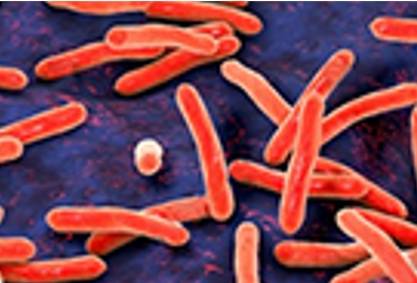
Anaerobic bacteria, in contrast, thrive in environments devoid of oxygen and high concentrations of oxygen can be harmful to them. They lack the capability to detoxify oxygen. Their terminal electron acceptor could be other molecules such as carbon dioxide, sulfur, acetate, or ferric iron. These bacteria generate substances akin to acetates, methane, nitrates, and sulfides. Depending on their tolerance to oxygen and growth conditions, they can be categorized as:
Obligate Anaerobes: These microbes can only grow and reproduce in an entirely oxygen-free environment, and oxygen can have lethal toxicity on them. Many species of Clostridium, a gas-producing bacillus, are strict anaerobes.
Facultative Anaerobes: These microbes can grow and reproduce in both anaerobic and aerobic environments, but usually grow better under anaerobic conditions. Escherichia coli is an example of facultative anaerobe.
Difference Between Aerobes and Anaerobes
Oxygen Demand: Aerobes fundamentally require oxygen to grow and metabolize. Through oxygen-dependent metabolic pathways such as aerobic respiration, they generate energy. In the absence of oxygen, aerobic bacteria's growth halts, eventually leading to death. Anaerobes, on the other hand, do not require oxygen for growth and metabolism; indeed, they may experience detrimental effects in its presence. These bacteria acquire energy through fermentative or other anaerobic metabolic pathways.
Growth Conditions: Aerobes typically thrive in oxygen-abundant environments, such as surfaces and bodies of water, where they rely on ample oxygen to support growth and metabolic activities. In contrast, anaerobes principally grow in anoxic or extremely oxygen-deprived conditions, such as deep soil layers, digestive tracts, etc. They are unable to develop in oxygen-rich environments and may even be harmed by the presence of oxygen.
Metabolic Pathways: Aerobes generate energy via oxygen-dependent metabolic pathways. Oxygen serves as the final electron receptor in the electron transport chain, thereby facilitating ATP production. Anaerobes derive energy through oxygen-independent metabolic pathways such as fermentation. Under oxygen-lacking circumstances, they utilize organic materials as the final electron receptor to create energy.
Physiological Characteristics: Aerobes manifest diverse morphologies and may produce heat-resistant spores under certain adverse conditions. Anaerobes, while also morphologically varied, typically do not produce spores, unlike their aerobic counterparts.
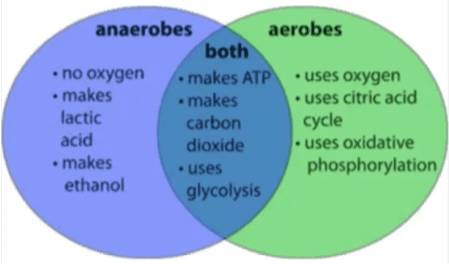
How to Identify Aerobes and Anaerobes
Certain biochemical reactions are employed for the classification of bacteria based on their oxygen requirements. Typically, oxidation-reduction indicators are added to culture media to ascertain whether unknown bacteria can utilize oxygen. Methylene blue dye is a commonly used indicator, employed to demonstrate anaerobic conditions and oxygen utilization, transitioning in color from blue to pink upon reduction, indicating a reaction with oxygen. The intensity of color change often correlates with the oxygen requirements of bacterial species present in the culture medium. This method is commonly conducted in milk to demonstrate anaerobic conditions within it.
In the pursuit of determining bacterial oxygen requirements, researchers often encounter challenges with conventional techniques. This arises from the fact that not all bacterial species can be cultivated in laboratory settings. Moreover, certain anaerobic bacteria exhibit heightened sensitivity to oxygen, necessitating rigorous methodologies to maintain anaerobic conditions. However, the advent of advanced technologies, such as sequencing techniques, facilitates the facile assessment of oxygen requirements alongside other biochemical characteristics.
Whole-genome sequencing affords a comprehensive overview of all features inherent to an organism. This approach serves to elucidate whether an organism harbors genes encoding oxygen-metabolizing enzymes. Conversely, specialized sequencing methodologies like transcriptome sequencing enable the observation of bacterial responses to alterations in growth conditions, such as fluctuations in oxygen concentration. Harnessing these novel technologies empowers researchers to transcend the limitations posed by traditional methodologies. By integrating genomic and transcriptomic analyses, insights into bacterial physiology and responses to varying environmental cues are attained, advancing our understanding of microbial ecosystems.
Examples of Aerobes and Anaerobes
Aerobic and anaerobic bacteria are prevalent in nature, better understanding these types can greatly enhance our view of microbial diversity, uniqueness, and complexity. Varieties of aerobic bacteria include Escherichia coli, Bacillus subtilis, Streptococcus pneumoniae, and Staphylococcus aureus, amongst others.
Escherichia coli: Typically found in the gut flora of humans and animals, E. coli, a Gram-negative bacterium, crucially requires oxygen for growth and metabolism. It has been extensively utilized in molecular biology research, medical diagnostics, and bioengineering due to its ability to thrive in oxygenated environments.
Bacillus subtilis: As a Gram-positive bacterium possessing features of thermal resistance and spore production, B. subtilis resides predominantly in soil. It is widely used in biological research laboratories and industrial production, such as enzyme production and optimization of fermentation processes.
Streptococcus pneumoniae: This bacterium, a Gram-positive cocci, is common in human respiratory tracts and is identified as one of the causal pathogens of pneumonia and other respiratory infections. Requiring oxygen for growth and metabolism, it is classified as an aerobic bacterium.
Staphylococcus aureus: This common bacterium, found on human skin, can incite skin infection, pneumonia, or toxemia if it breaches the body's surface, emphasizing the necessity for careful personal hygiene.
Common anaerobic bacteria include Clostridium perfringens, Bacteroides, Actinomyces, and Peptostreptococcus anaerobius, among others.
As a quintessential anaerobic bacterium, Clostridium perfringens is a Gram-positive, spore-forming rod bacterium, ubiquitously dispersed in soils and animal intestines. It is an established pathogen, associated with causative instances of gas gangrene and food poisoning. Bacteroides encapsulates a genus of Gram-negative, anaerobic bacteria extensively distributed in the intestinal tracts of humans and animals. These bacteria play a significant role in the gastrointestinal microecosystem, contributing to food degradation and maintenance of gut health.
Actinomyces, a genus of Gram-positive anaerobic bacteria, can be commonly found in soil and water bodies. Certain strains of Actinomyces exhibit antibiotic-producing capabilities. Yet, they may also act as possible human and animal pathogens, leading to a myriad of infections. Peptostreptococcus anaerobius dwells in the microbiota of the human gut and vagina, connected with the formation of abscesses, particularly in the brain and liver.
Clinical infections are commonly induced by anaerobic bacteria such as Bacteroides fragilis, Peptostreptococcus, Clostridiu, and melanin-producing bacilli. Among them, spore-forming Clostridia are the most virulent, with highest mortality rates. Conversely, Gram-positive non-spore forming bacilli, such as Lactobacillus and Eubacterium, constitute an important part of the intestinal flora, exhibiting minimal pathogenicity and posing the least harm to human health.
The Effect of Antibiotics on Aerobic and Anaerobic
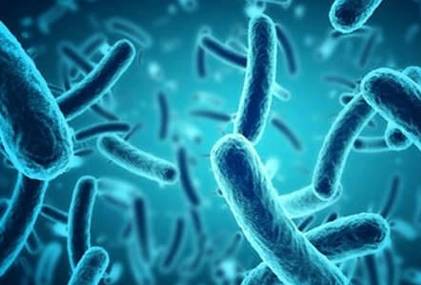
Antibiotics play an instrumental role in combating infectious diseases caused by bacteria. However, the approach and efficacy of these antibiotics greatly diverge when dealing with aerobic and anaerobic bacteria. Understanding the inherent disparities between aerobic and anaerobic bacteria is not only crucial, but it is also key to comprehend how antibiotics impact each type differently.
Aerobic bacteria, which necessitate oxygen for survival, are typically found in oxygen-rich environments; as such, certain antibiotics have been proven particularly effective against them. Antibiotics such as penicillin, cephalosporin, and macrolides function by inhibiting bacterial cell wall formation, disrupting protein synthesis, or obstructing DNA replication. For instance, penicillin binds to the enzymes accountable for bacterial cell wall formation. Consequently, aerobic bacteria are unable to form their protective exterior rendering them highly susceptible to destruction.
As for anaerobic bacteria, those that exist in environments void of oxygen, antibiotics like metronidazole are frequently employed due to their unique mechanism of action. Metronidazole is only activated within the cells of anaerobic bacteria. Once this activation ensues, it generates a compound that damages the bacteria's DNA, obstructing its ability to continue its normal functionality, leading to the eventual demise of the bacteria. Besides, Carbapenems, Lincosamides, and β-lactams also show therapeutic effects against anaerobic bacteria.
As anaerobic bacterial culture requires specific conditions and time, physicians often effectuate anaerobe-targeted treatment decisions prior to obtaining lab results. As the common sites of infection include the oral cavity, abdominal cavity, intestines, and pelvic region, anti-anaerobe antibiotics are frequently used in the therapeutics for infections in these areas. Moreover, when pus or exudates exhibit a fetid or sweet odor, there is a significant likelihood of an anaerobic infection.
References
- Linn D M, Doran J W. Aerobic and anaerobic microbial populations in no‐till and plowed soils. Soil Science Society of America Journal, 1984, 48(4): 794-799.
- Gaetti-Jardim E C, Marqueti A C, Faverani L P, et al. Antimicrobial resistance of aerobes and facultative anaerobes isolated from the oral cavity. Journal of Applied Oral Science, 2010, 18: 551-559.
- Duan J, Zhang C, Che X, et al. Detection of aerobe–anaerobe mixed infection by metagenomic next-generation sequencing in an adult suffering from descending necrotizing mediastinitis. BMC infectious diseases, 2021, 21: 1-7.
- Boyanova L, Kolarov R, Mitov I. Recent evolution of antibiotic resistance in the anaerobes as compared to previous decades. Anaerobe, 2015, 31: 4-10.
- Alauzet C, Lozniewski A, Marchandin H. Metronidazole resistance and nim genes in anaerobes: A review. Anaerobe, 2019, 55: 40-53.
- Arber, W. Genetic variation: molecular mechanisms and impact on microbial evolution. FEMS Microbiology Reviews, 2000, 24(1) 1-7.
- Karakashev, D., Galabova, D., and Simeonov, I. A simple and rapid test for differentiation o aerobic and anaerobic bacteria. World Journal of Microbiology & Biotechnology, 2003, 19: 233-238.







